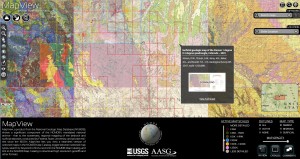What can spatial thinking and geographic information systems tell us about the world around us, and how can these methods help us to enhance our teaching and learning for our students? Come learn with us in our newly redesigned workshop, Spatial Thinking with GIS!
All throughout your day, you are benefitting from geospatial technologies, whether you realize it or not! The prevalence, impact and importance of these technologies is rapidly expanding. Geospatial thinking has been identified as one of the key skills individuals will need in our evolving global and technologically advanced society.
Dr. Joseph Kerski, Education Manager at Esri, has developed this amazing workshop to introduce educators to the foundational principles in Geographic Information Systems (GIS) and the perspective of spatial thinking. Register today for this engaging, hands-on 7-day workshop which launches on June 26, 2015
Why is “Spatial Thinking” such an important topic in higher education right now.
JOSEPH: I believe there are several converging factors that make spatial thinking incredibly relevant and important: (1) Educators are realizing that for students to be well equipped to make decisions in our rapidly changing and complex 21st Century world, those students need to be grappling with real-world data. The data that students need to examine is ever-increasing in volume; it is often crowdsourced; it contains pieces of a wide range of quality. Maps have always been rich sources of data, as well as being fascinating things to examine, and therefore, spatial thinking using maps and geotechnologies is being seen as the perfect way of helping students make sense of the “big data” era that is upon us.
(2) Students also need to be grappling with issues that are relevant to society. These issues include water, city planning, energy, sustainable agriculture and food security, population change, land use, natural hazards, climate, economic growth, and others. All of these issues occur somewhere—they have a location, and geographic patterns– and they change across scales in space and time. Therefore, examining these issues using spatial thinking and geotechnologies is seen as a core competency for education.
(3) Maps are becoming the new means of communication and the new way for organizations to organize and manage their data and operation. Maps and geospatial data have become a “nervous system for the planet” – helping us to understand our planet as never before. Much of the data that can and should be mapped occurs in real time, such as wildfires, bus movements around a city, weather, and much more. How can these dynamic processes be examined through today’s web mapping platforms?
(4) Spatial thinking has a rich research tradition and brings much to bear on its use in education: How do people learn with maps? How is our navigational ability impacted by GPS and turn-by-turn directions? How can learning about places and issues be enhanced through the use of multimedia in maps?
(5) Maps are engaging. They are sometimes controversial. They can be fun! Using maps in teaching spatial thinking helps engage students in rich and deep conversations that cross traditional disciplinary boundaries. They can help us understand current events and past history, from local to global scale. Using geotechnology builds technical and inquiry fluency. Spatial thinking helps students think critically about data and develop problem-solving abilities.
What do you hope participants take away from this workshop?
JOSEPH: I want participants to: (1) think about maps in new ways: Maps are not simply reference documents that we use to look up locations, such as “Where is Iceland”? Rather, maps are doorways of discovery; they are tools of investigation; they can help make our planet a more sustainable place. (2) Be empowered to use geotechnologies, and in particular, GPS-enabled smartphones and web mapping tools, for their own instruction and research. (3) Think spatially about the world around them, and consider the “whys of where” in understanding our changing planet. (4) Learn about some key geographic concepts, such as scale, map projections, resolution, and systems; but also some geographic perspectives, and some key geotechnology skills, such as how to make maps, how to symbolize and classify data, how to incorporate multimedia into maps, how to create presentations with maps, and how to share maps with others.
Who should take this workshop?
JOSEPH: For centuries, maps have been appealing to people—they convey a great deal of information in a short amount of space. This spatial thinking and geotechnologies workshop is designed (1) for people who have long had an affinity for maps. It is also designed for (2) those who seek to use today’s mapping technologies in new ways in their own work, and (3) for those who are curious about their world and want to better understand it.
Please visit our website to register for Spatial Thinking with GIS on June 26.
Kristen Bourgault is an instructional designer with a special talent for facilitating the development of high quality online courses and programs in higher education. Her work has helped to jump start and reinvent online degree programs at Simmons College, Lesley University, Quinnipiac University and American Sentinel University. She holds a firm interest in the next generation of online teaching and learning, with a focus on gamification, social media, and student engagement. She earned her MS in Instructional Design from Capella University, complemented by a BS in Web Design and Development from Simmons College.



